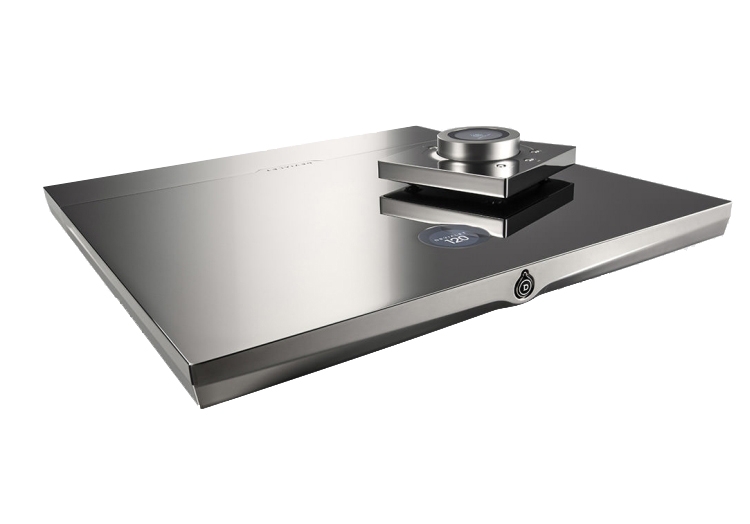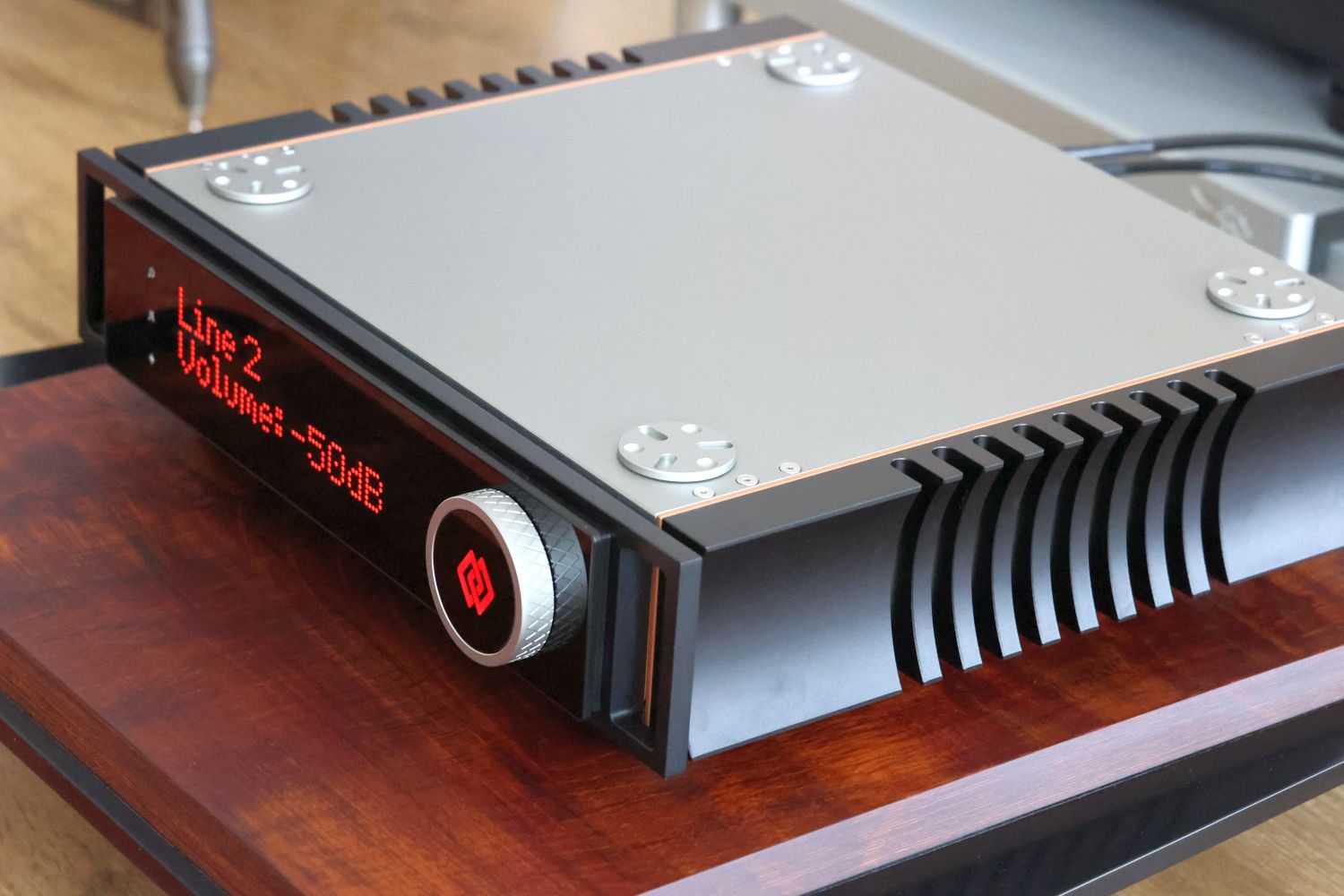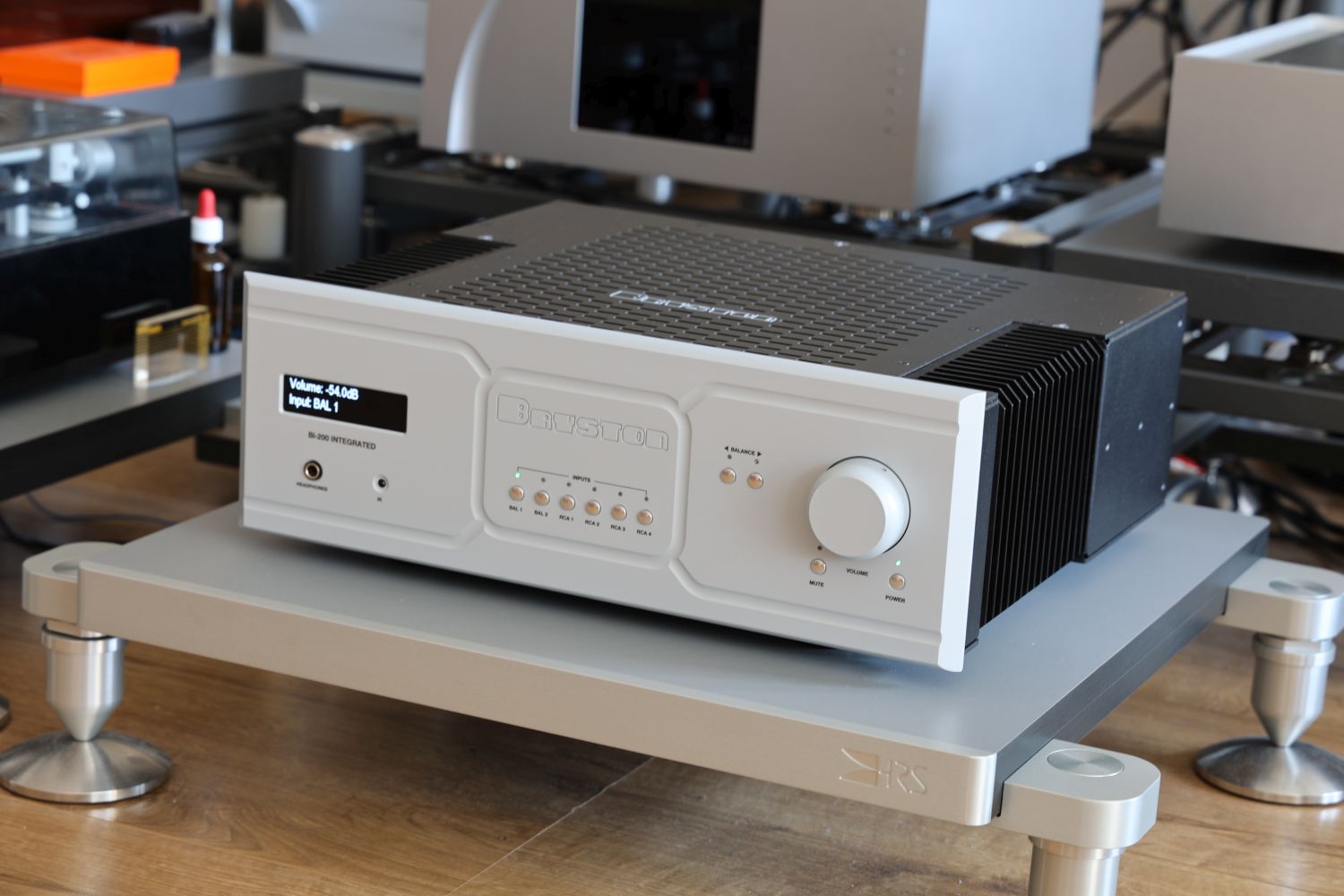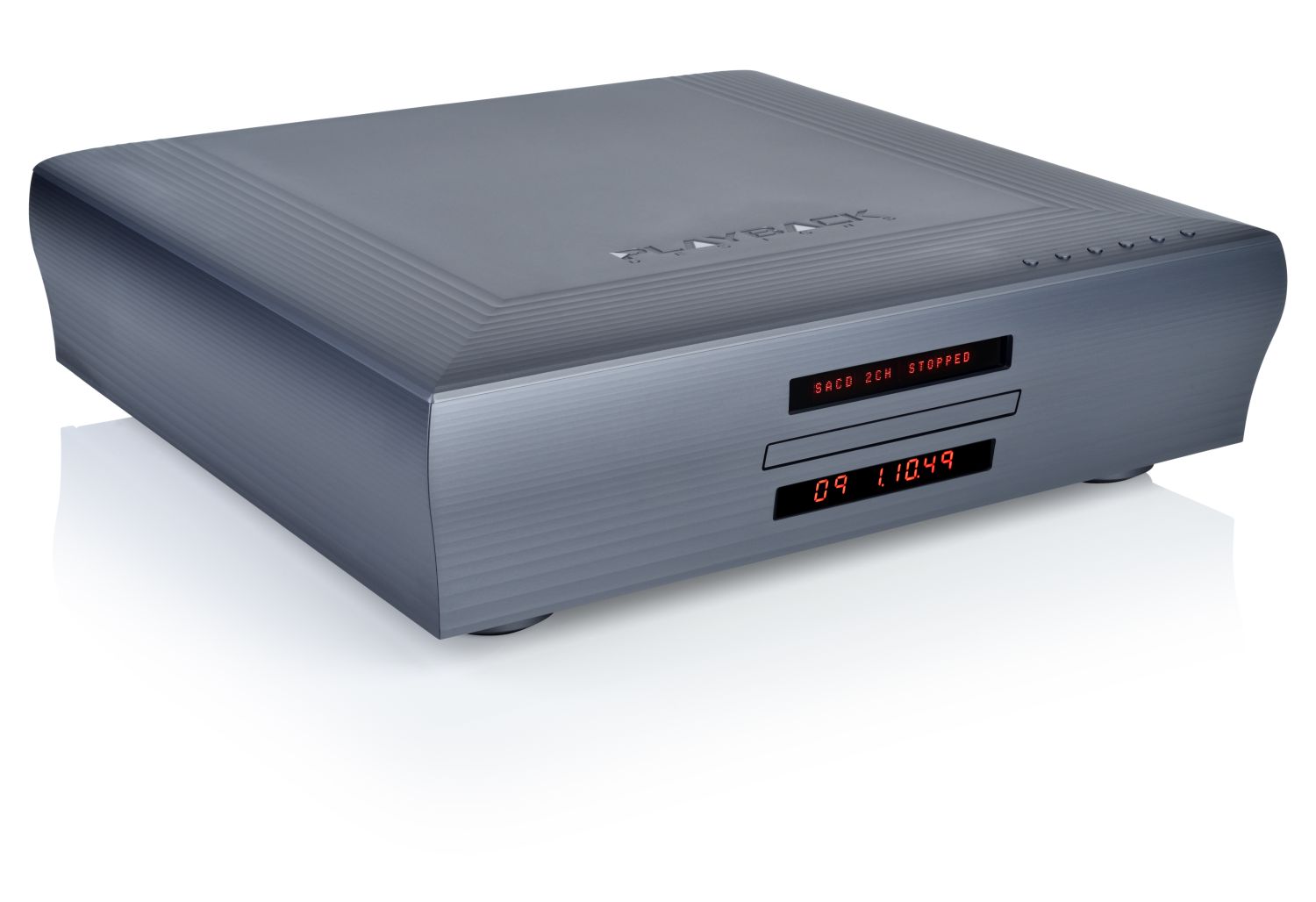
Continued from the main Devialet 120 and 200 review
With the addition of new features the Sound Quality is also influenced
The original Devialet review as linked to above was written using the latest Firmware at that time: version 8.1.3. Please see that review for more information about the setup and such. Source was mostly an AudioAanZee Reference Flow Music Server using USB, but Devialet Air over ethernet was also used at times. DPM was off and no SAM was used, nor the tone controls. Meanwhile (Jan 2016) 9.0.1 is available but I haven’t tested that version yet. Reason for this is that I know from past experience with the PS Audio PWD MKII that firmware can substantially change the component’s character, and not always for the better. With 8.1.3 at least I knew what I had, and it was very good indeed. It was with this version that I drew my conclusion of the Devialet 120 and 200 being equal to, and in some aspects better than, more costly equipment.
Imagine my surprise then when my friend Berry urged me to downgrade to 7.1.3. Not just for any reason, but because he knew my audiophile taste (classic Jeff Rowland) and he had been told and subsequently experienced in his own setup, that this older version sounds even more fluid, refined, gentle and for a lack of a better word “analog”. After having done the downgrade I can only agree with him (and many Devialet chat forum members) that 7.1.3 sounds even better.
Compared to the older 7.1.3, the more recent 8.1.3 adds some functionality, but in the process seems to have implemented a layer of processing that makes the sound less free-flowing. It’s somewhat akin to comparing an original CD with its remastered version. Sure it sounds louder and more forward, and perhaps more “impressive”, but it is often also less gentle, less fluid and refined, and seems just too square and pushy. I can understand that some people might actually prefer the more forward and more powerful delivery of the newer firmware though. Especially the bass has a certain drive with 8.1.3 that it doesn’t have with 7.1.3. But even if I have high praise for the Devialet 120 and 200 with 8.1.3, compared to them running on 7.1.3, the later version sounds very forward in the midrange and lower treble, soundstage is more narrow and is less layered in the depth plane, and decays are shortened.
Future
Devialet have announced that something big is coming at around Munich time this year… Because I can’t imagine Devialet ever lessening the amount of processing, I fear that the sound will not return to 7.1.3 style in future firmware versions. And so I certainly hope that they are not unleashing functionality that I MUST have, as that would come down to having to choose between sound quality and functionality. Aargh, the life of an audiophile…
Update September 2016 – Version 10.0.2
Berry and I teamed up again to compare firmware versions. For the comparison we used his system that consists of a Devialet 200 and Magnepan MG1.7i speakers. There is no SAM for Magnepans and so this feature was not used and DPM was switched off. Berry’s source is a Windows 10 computer, running Foobar with Devialet Air 3.0 Beta over ethernet. His Devialet normally runs 7.1.3, just like my Devialet 120, and his sound is very smooth and free-flowing with this version firmware. Importantly, the Magnepans, like my Logans, are very fast, also in the bass, and so they sound perfectly balanced using the more relaxed sounding 7.1.3 firmware.
Switching to version 10.0.2 after having listened to a couple of tracks with 7.1.3 we were astounded at the enormous difference in sound. While it can be argued that the Devialet sounds more accurate and more articulate with version 10.0.2, this being most beneficial in the bass, it also sounds much more strident. It’s like the extra control and power in the bass (good!) is also evident in the midrange and treble (not necessarily good). For some people, the more immediate nature of the new firmware’s sound will make the product come across as being more dynamic, but to our ears and in this system, dynamics (the difference between soft sounds and loud sounds) seem to be diminished. The sound at the same volume level now comes across as much louder, reminiscent of typical dynamic compression used on many CDs. And even though transients are now even faster, the feeling of a natural dynamic flow is now actually much lessened, and more importantly, very low level nuances now seem to have been lost in the process. It’s like the amp now paints with a bigger brush, literally brushing over the subtle details, replacing them with a bolder, more coarse sound.
Version 8.1.3
This version turned out to form the middle ground between the fluid and relaxed 7.1.3 and the tight and articulate 10.0.2, having a faster, more pronounced sound than 7.1.3 but avoiding going overboard by exerting too much control and retaining most of version 7.1.3’s subtle nuance and natural flow.
To our ears, and again, in this system, version 10.0.2 seems to have taken matters overboard, resulting in a sound that might well be measurably better, but lacks musical soul. This way, the Devialet 200 is turned into an amplifier that starts to sound digital again, which I think is a shame because with 7.1.3 it really is one of the most fluid sounding amps I know of.








Hello Christiaan, always a good read.
Question: I use a Mac mini as source. What connection do you think is best?
Ethernet or USB?
Currently I use a AQ vodka ethernet which sounds great, but curious if USB will improve.
regards,
Cedric
It really depends on your preferences. I have a friend who prefers ethernet with the Expert 200 for its more fluid and airy presentation. I prefer USB for its tighter bass and more pronounced lower midrange (fuller timbre).
Any better quality streamer will sound way better than any Mac using any software. Also the AES/EBU input on the Devialet is by far the best sounding one. Hope this helps.
Agreed – I also find that servers/streamers sound better than regular computer software. That said, Devialet Air is a very good protocol, similar in quality to Roon RAAT. On digital input quality: that’s a personal matter and also dependent on the source device. Manufacturers will always state that AES is the best but I find that this is a relative matter.
The reason I am writing to you is that I am also a user of Martin Logan Ethos and I’ve got a tempting offer for a Devialet 120. I am using now a Linn Majik DSM (Amp 90W, Streamer, DAC, Room correction).
Selling point SAM does not apply to Ethos Speaker and with every firmware upgrade sound quality seems to suffer acording to your review. Meanwhile there is version 11 or 12 I think.
So my questions:
Do you still listen with that equipment and are happy with it?
Was one of the newer firmware updates audiophile friendly again or just more functionality as you described beforehand?
Would you consider it a step forward comparing it to my Linn Majik DSM? (Taking in account that I would need a firmware version where streaming is supported or I could use the Linn as Streamer only and Devialet as amp only)
A good opportunity or should I skip it and getting another amp instead like from Accuphase which sounds warmer and more soulful (sharing the same tastes for music reproduction warm preferred over analytical coldness)?
Thanks for your opionon from point of view early 2018
Hi Daniel, indeed Devialet SQ does not seem to improve with firmware updates overall, that is if you’re looking for a relaxed, stereotypical analog-like sound. These components were part of a secondary system and I sold the Devialet as well as the Ethoses a while ago, so the reports on HFA are my latest findings with these products. Here are my last findings regarding the Devialet firmware, I have not heard later versions. Not having heard the Majik DSM, only earlier Linn amps, I am taking a leap here but I am inclined to think that Devialet would sound better than the Linn, even with recent firmware. I would not consider Devialet to sound cold per se, and certainly not harsh, but maybe a bit too controlled and precise for some tastes. Accuphase has a different presentation. Their Class A amps are smoothest and most fluid. I compared my Devialet 120 directly with an Accuphase E-600. Level of detailing between the two was a tie but the presentation (firmware 7 or 8) a little different: Accuphase more sonorous in the bass and more lively in the upper midrange. Both sounded smooth. Devialet, however, was airier. Their entry-level E260 class AB amp also sounds more sonorous and darker than Devialet, but less smooth than the E600 and definitely less well-resolved than either the E600 or the Devialet.
Dear Christiaan,
I’m writing you underneath this article as I could not find a direct mail address except the one for business purposes. I always read your reviews and articles with great interest and find inspiration in them. After having read your test, I bought the Origin Live Calypso Mk4 with the Illustrious arm equipped with the silver hybrid tonearm cable and I’m very happy with it. I just added the OL record weight and, again, your review was absolutely correct in describing what it does. Other tests confirmed what I already had, GigaWatt power cables, for instance, which I have been using for some time now with their power strip.
I now have a question for you: I’ve been using a Devialet 200 for over six years and it’s time to make a change. I could invest to have it transformed into an Expert Pro220 (for 2.390€). Or I could make a change. I would like to stay with the all-in-one concept as to avoid too many boxes, cables etc.
I recently heard a demo of the Lyngdorf TDAI-3400 with the same speakers I use, the KEF Reference 3. It is all digital, all-in-one, and it sounded gorgeous. It was not in my room, but it has a room equalizing system built in that should make it sound great everywhere. I was not able to make a direct comparison between the Devialet and the Lyngdorf, so it’s hard to make a judgement. Getting it while trading in my Devialet would cost me about the same as upgrading the 200. Hard choice. It would be great if you could test the Lyngdorf and, as you know the Devialet well from having tested it, advise me. What is the chance that you review it? Or do you know it and can tell me what you think? Both would be wonderful.
Thanks for a great website and warm regards,
Günther
Hi Gunther, good question. Alas, I have not directly compared Devialet to Lyngdorf but I can tell you that the latter has a typically dry and direct sound whereas the Expert 120 and 200 are smoother and more colorful, at least, when used with the firmware of that time. While the Devialets are still partially Class-A, the Lyngdorf is a pure switching amp. If you don’t fear a drier, more exact sound, I would suggest taking the plunge for the Lyngdorf rather than upgrading the 200. For one, it will still be a Devialet but with a changed sound direction that you may or may not like, and second, you won’t recoup the extra expense when selling it.
Good point, thank you!
Best regards,
Günther